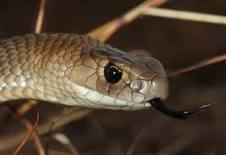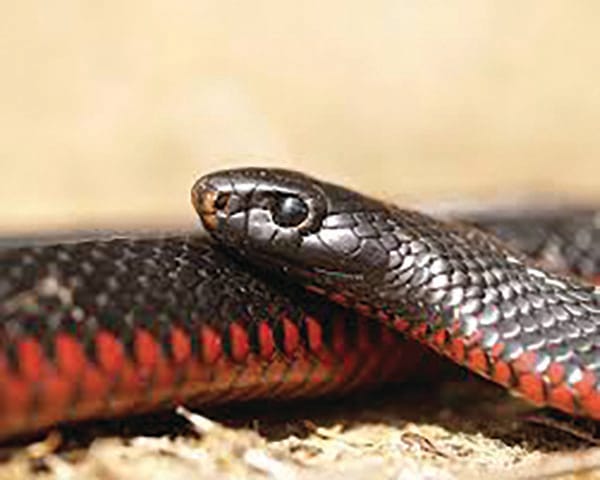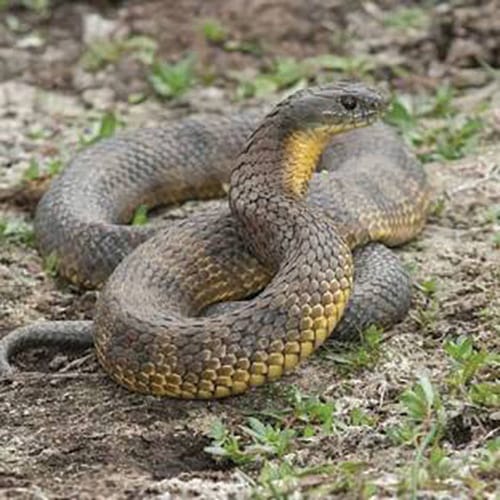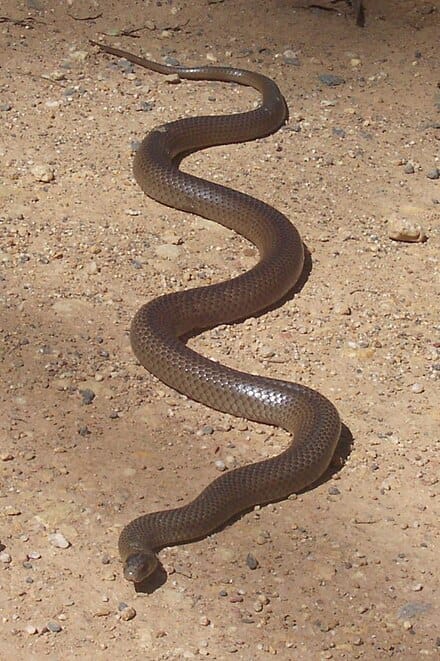All about wildlife

Snake season
The way the wind has been over the last month, I’m beginning to feel like we live on the southern coast! It’s been a slow start to the snake season this year but it has definitely begun.
Our Australian snakes can spark fear into people, understandably as we possess a high number of the most venomous snakes in the world. Fear can often lead to irrational behaviour. Anyone who is phobic of spiders knows all too well that their reaction is an over-reaction and fear of snakes can lead to the same behaviour.
We do not have tigers, lions or bears in Australia. Our top predators here are crocodiles, large monitor lizards, birds of prey, dingoes and snakes.
Snakes play a vital role in our environment and are a key member of healthy biodiversity. In the case of actual numbers of envenomated bites in Australia, over ninety percent of all bites are what we call ‘dry’ bites. A dry bite is when the snake has not actually envenomated you when it has bitten. Different snakes have different rates of how likely they dry bite. An Eastern brown for instance has a dry bite instance of around 80 percent. An inland taipan on the other hand, if it chooses to bite in defence has a dry bite rate of only 5 percent.
The venomous snakes we have in our area which are ones to take care around are the eastern brown, the tiger snake and the red-bellied black snake. Dry bite or not, we certainly do not want to try our luck with getting bitten by any of these snakes. There are lots of things we can do to make living with them easier. Keep the walking areas in your garden tidy so you can see where you put your feet. I love a rambling garden. So do snakes as they usually contain higher diversity of prey species and have plenty of places to hide. I would not give up a rambling garden for fear of snakes but I would ensure my pathways are clear. If you are still worried about not seeing them, you can trim bushes, hedges and shrubs so they are off the ground a little and you can see under them.
A great alternative is to snake proof your yard. This is also a great way to protect your pets, especially if you have a pet that will attack or play with a snake. Snakes do not seek out our pets to bite unless it is something small and something it may see as a food item. Cats and dogs only get bitten if they antagonise the snake. You can stop snakes getting into your yard by blocking entry points. Any holes, gaps in fences can be filled with suitable material. Vermin mesh is a fantastic product which you can attach to fences and gates. This is a hard wire mesh with tiny squares which mice and even baby snakes cannot get through.

Gates are a little more fiddly to do but as long as there are no gaps under or through gates and fences, this helps keep your pets safe. Make sure doors to your house are sealed at the bottom. Gaps under doors are entry points. As a basic rule, if a mouse can get in, so can a snake. Gaps around pipes under sinks, etc can be common entry points for rodents and snakes, especially if your house is on stumps.
Dog doors can be another entry point. Snakes use their excellent sense of smell and eyesight to navigate the world. They are very reactive to movement. If you do find yourself in close proximity to a snake and it feels threatened it will display defensive behaviour. Flattening out its head and neck, this is called flaring, is a telltale signal from the snake to tell you it is watching and telling you to back off. The snake’s head will be off the ground. If you keep advancing in what is perceived as a threatening manner, the snake will lift its head higher, standing up fully, may open its mouth and be in the typical ‘s’ stance off the ground. To persuade you to back down, they may surge towards you to push you away. As soon as you back away or stay stock still, the snake will lay back down and try to flee when it feels it is safe to do so.

There are some common sense things to do and not to do when it comes to snakes: DO keep an immobilisation bandage in your first aid kit. We live in Australia, this is a no brainer. Verse yourself in how to use it. Remember you are immobilising the person’s limb to restrict movement, you are not trying to stop blood flow. There are plenty of great online videos which explain this.
DO keep your eyes open while bushwalking or walking around your property. This includes warm summer evenings and nights.
DO call a snake catcher to catch an unwanted snake and for advice when you need. Most snake catchers are happy to explain how you can help make your yard and home snake safe.

DON’T attempt to kill a snake. Snakes are protected under the wildlife act and are an essential member of a healthy environment. Trying to kill a snake also puts you at high risk of getting bitten. Killing a snake is not a hero act: it is killing an animal that only wants to get away from you.
DON’T use ‘snake netting’. This stuff is illegal due to animal cruelty reasons. It is cruel for not only snakes but also any other animal who gets caught in it.
DO remember that snakes will respect you if you respect them.





